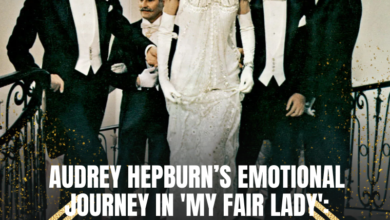Denzel Washington Reveals the Spike Lee Film That Left Him Fearing for His Life
OPINION: This article may contain commentary which reflects the author's opinion.
Spike Lee is one of cinema’s most audacious and fearless filmmakers, unafraid to take on the most challenging and controversial subjects, particularly regarding race and racial tensions in the United States. Known for his politically charged films, Lee has always been willing to confront uncomfortable truths, as seen in Do The Right Thing and BlacKKKlansman. These films use suspense, satire, and even comedy to shine a light on deep-rooted societal issues. However, there was one film that pushed the boundaries of not only Lee’s filmmaking but also the safety of his cast and crew, leaving Denzel Washington fearing for his life.
The movie in question is Malcolm X (1992), a biographical drama that chronicles the life and legacy of the iconic Black activist Malcolm X. Washington was tasked with bringing this powerful and divisive figure to life, a role that not only marked a turning point in his career but also thrust him into a politically charged environment that would make even the most seasoned actors uneasy.
A Film Shrouded in Controversy
When Washington took on the role of Malcolm X, it was clear that the film would not just be a typical biographical picture. The film’s depiction of Malcolm X, his rise to prominence in the Nation of Islam, his transformation into a global figure, and his eventual assassination, was destined to stir emotions, especially from those who disagreed with Malcolm X’s radical views on race and activism. The movie’s production was fraught with difficulties, and it became a lightning rod for those who resented the powerful ideas and historical legacy of the figure Washington was portraying.
As Washington explained, there were moments during filming when the cast and crew were genuinely concerned for their safety. “Shit, we were worrying about getting killed,” Washington said. “You’re talking about politics; we were trying to stay alive. Put it this way: we were stepping on some serious toes. And I’m not just talking about the studio.” The tension surrounding the film wasn’t just about the subject matter; it was about the very real political landscape in which they were working. At the time, many white Americans harbored strong animosity toward Malcolm X and his activism, and that disdain translated into threats and an atmosphere of hostility.
Spike Lee’s Vision for the Film
Before Lee was attached to direct Malcolm X, the film was originally set to be helmed by Norman Jewison, a white director. Lee, however, was outspoken about his desire to take the reins of the project, citing the need for the film to authentically reflect his own vision of Malcolm X. Lee’s frustration with the original direction was palpable. “I’m directing this movie, and I rewrote the script, and I’m an artist, and there’s just no two ways around it: this film about Malcolm X is going to be my vision of Malcolm X,” Lee said. His insistence on taking control of the film wasn’t just about creative differences—it was about honoring the complexity and legacy of a man who had been both vilified and celebrated for his radical views on race and Black empowerment.
Once Lee came on board, the film became even more politically charged. Many Black nationalists, who had concerns about how Malcolm X would be portrayed, became vocal in their opposition to Lee’s involvement, fearing that the director might not capture the revolutionary’s true spirit. Protests broke out in Harlem, with over 200 people rallying against the film and its portrayal of Malcolm X. The production was now not only contentious for its political subject matter but also for the internal strife within the Black community over how Malcolm X’s image would be presented on screen.
A Hostile Climate on Set
For Washington and the rest of the cast and crew, the climate on set was daunting. The film was shrouded in controversy, both in front of and behind the camera. The growing hostility around the film created an atmosphere where safety was a concern, as Washington recalled the very real fear that the production might be targeted by those who opposed its message. The combination of external threats and internal pressure made Malcolm X not just a challenging role for Washington but a high-stakes project for everyone involved.
Despite the volatile environment, the production continued, and the cast and crew completed the film without major incidents. However, the emotional and physical toll of working in such an environment left an indelible mark on Washington, who has since reflected on how the political and social climate surrounding the film added a layer of intensity to an already demanding project.
The Legacy of Malcolm X
Despite the challenges and dangers the production faced, Malcolm X went on to become a critical and commercial success. Washington’s performance earned him an Academy Award nomination for Best Actor, and the film itself is widely regarded as one of the most important works in American cinema. Lee’s vision for the film, as well as his unwavering commitment to telling Malcolm X’s story in an authentic and unflinching way, solidified Malcolm X as a cultural milestone.
For Washington, the role of Malcolm X was transformative, both in terms of his career and his understanding of the power of film to address complex and contentious issues. While the film’s production was marked by fear and controversy, it also became a symbol of the power of cinema to provoke, challenge, and ultimately create change.
As Washington reflected, the making of Malcolm X was more than just a film; it was an act of resistance against the forces that sought to suppress Malcolm X’s legacy and the messages of empowerment he championed. Despite the fears and difficulties, the film remains one of the most potent examples of how art can reflect—and even influence—societal and political movements.
In the end, Malcolm X not only brought Denzel Washington closer to the heart of an important historical figure but also illustrated the very real risks that artists often take when confronting powerful, contentious issues through their work



